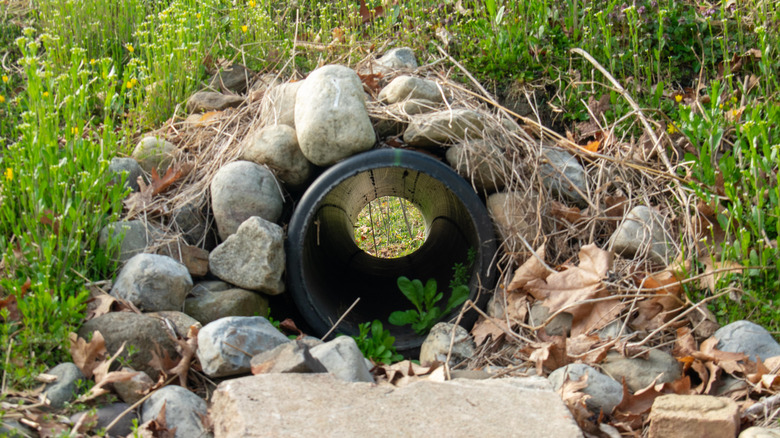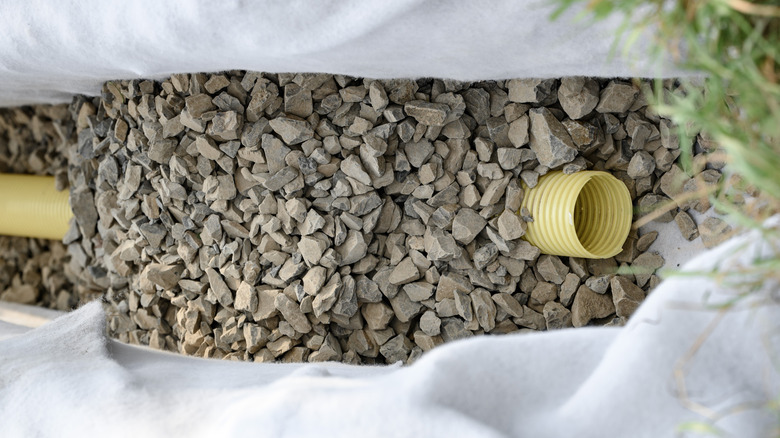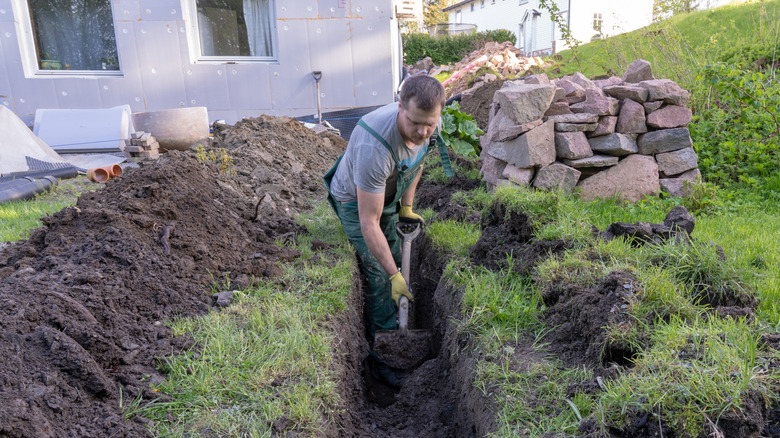Avoid One Common Mistake When Installing French Drains
French drains are all about solving one of the least glamorous home problems: water being where it shouldn't be. They redirect excess water from the house, protecting your basement, foundations, and yard from possible waterlogging, moisture build-up, and soil erosion. (French drains are one of several effective drainage solutions that prevent overflow on your property.) However, the simple mistake of forgetting to add a filtration or drainage fabric to the system, or picking the wrong one, can affect the functionality of your drain.
French drains work by collecting water through a perforated pipe buried in a trench that has been filled with gravel and lined with filter fabric. The right filter fabric allows water to seep through the stones while blocking out debris, silt, and soil. Without this measure, the drained water gets mixed with dirt which could block the spaces between the stones, reducing the amount of water that gets to the pipe. Even when the water does get to the drainage pipe, it's only a matter of time before the soil and debris build up and clog it. Not every fabric is ideal for this role; it needs to be able to sustain a high flow rate while still filtering out dirt and soil. In most cases, choosing the wrong fabric causes water to pool on top of the fabric, preventing its flow through and out of the pipe.
How to pick the right fabric
Now you know drainage fabric is essential, how do you choose the right one? Well, let's start by pointing out that you shouldn't choose just any type of landscape material. These materials aren't made for drainage purposes and they will just slow down the movement of the water and can deteriorate with time. To make the right choice, you need to consider the fabric's permeability, strength, and durability. High permeability is most the important characteristic as it determines the efficiency of water flow. Strength and durability come next because you need a fabric that can withstand soil pressure. It also has to be durable enough to withstand any wear and tear that occurs during installation and while it's in use.
Non-woven geotextile fabric is the generally recommended option. It is a material specifically designed to let water through while keeping soil out. It's available in different weights, but the medium weight (around 4 to 6 ounces per square yard) is usually preferred because it lasts for a long time. There are also woven geotextile fabrics but they are almost impermeable so they aren't ideal for drainage systems.
You should also take note of some common mistakes to avoid with your drainage fabric. Firstly, ensure you test the fabric you plan to use before you start your project to confirm it has a solid water flow rate. Also, you should avoid overlapping the fabric by several inches; this will make drainage slow. Instead, you should overlap one edge slightly over the other before securing it with a pin or wire.
Other mistakes you should avoid
Aside from selecting the wrong French drain fabric, there are other mistakes you should avoid. One involves digging a trench that is too small. Digging shallow and narrow trenches might seem like a way to save time, but you're really just shooting yourself in the foot. With small trenches, the drain pipes might not fit and even if they do, they may not handle the high volumes of water experienced during heavy downpours. Your trench size will largely be determined by the size of your drain pipe and other geographic factors, but generally, a standard yard drain needs a trench that's at least 18-inches deep and 12-inches wide.
Before digging the trench, don't forget to call 811. Experts will soon come round and help you locate any utility lines beneath the ground so you don't end up damaging sewage or power lines during your installation. You should also be careful not to damage your sprinkler system as well. What's more, your trench should have a positive slope so the pipes will collect and drain water properly. Water can't drain on a negative slope while a flat slope causes poor drainage and water pooling. The layering materials for your drains matter too. Always opt for clean, round gravel. And, for pipes, it's best you stick with high-quality HDPE pipes with well-sized perforations specific for water drainage systems. Following all these tips, and avoiding the aforementioned mistakes, will ensure that the long-term cost of installing your French drain doesn't increase due to repairs.


